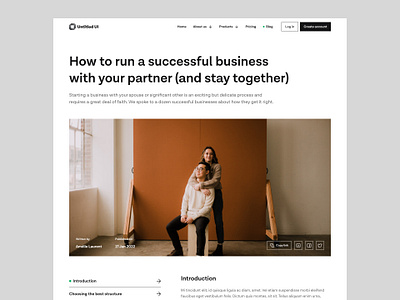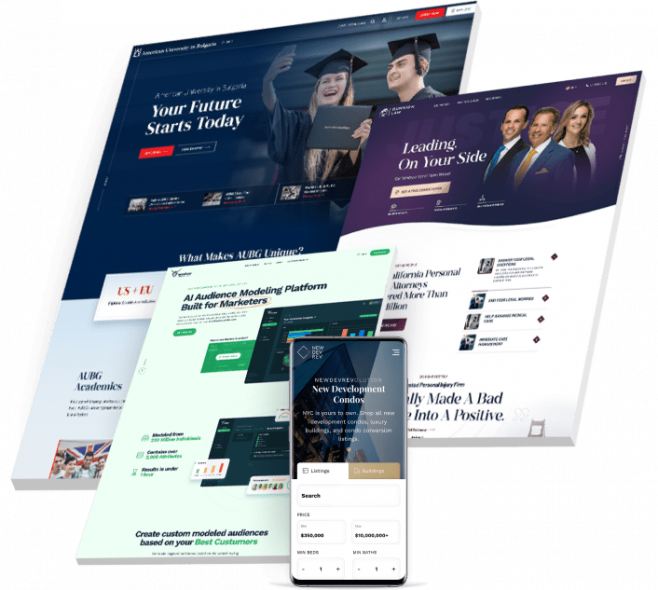Unlock the Secrets to Reliable Website Design for Your Service Growth
Unlock the Secrets to Reliable Website Design for Your Service Growth
Blog Article
Trick Techniques for Applying User-Centric Web Site Layout to Boost Engagement
When thinking about the execution of user-centric site style, specific techniques are instrumental in enhancing interaction. Extensive study right into individual demands and preferences develops the foundation, leading the creation of customer identities to educate style options. Instinctive navigating and receptive user interfaces are crucial, making sure simplicity of accessibility across all gadgets. Customizing content enhances individual contentment, and robust access attributes expand reach. These methods jointly foster a more purposeful online experience. But how do these aspects integrated effectively, and what practical steps can be taken to guarantee their successful assimilation?
Recognizing Individual Demands
Recognizing individual needs is a fundamental action in the process of user-centric web site design. Methods such as studies, interviews, and individual screening can provide important qualitative and measurable data regarding exactly how users communicate with the internet site.
Analyzing this information enables developers to develop thorough user personas that stand for the different sections of the target audience. These characters aid educate design decisions by highlighting certain user objectives and challenges, leading the development of functions that resolve these needs efficiently. Furthermore, recognizing the context in which customers operate-- such as their atmosphere, tool preferences, and time restrictions-- can better refine the layout method.
Empathy plays an essential duty in this process, enabling designers to see the website from the customer's perspective. By prioritizing individual demands, the design procedure ends up being a lot more focused, protecting against the addition of unneeded aspects that can mess the user experience. Ultimately, a deep understanding of user needs contributes in crafting a site that is both practical and meaningful.
Creating Intuitive Navigating
Having developed a detailed understanding of user requirements, the following action in user-centric website style involves creating user-friendly navigating. Efficient navigation is fundamental to individual satisfaction, affecting exactly how easily individuals can find information and full tasks. To achieve intuitive navigation, developers need to focus on simpleness and quality, making certain that the navigating framework is regular and sensible throughout the site.
Organizing content into a clear power structure is critical. Website Design. Using acquainted labels and icons can guide customers effortlessly, decreasing cognitive lots and enhancing the total individual experience. A well-designed navigation bar need to be plainly placed, allowing users to identify their existing area and quickly discover other areas of the web site
It is likewise vital to include interactive elements such as breadcrumbs and search capabilities to assist users in browsing facility websites. These attributes give additional paths and boost the availability of web content, satisfying numerous customer preferences and behaviors.
Checking navigating with real customers is necessary to identify possible pain factors and ensure performance lines up with customer assumptions. Regular responses loops and repetitive improvements can aid maintain a reliable navigation system that adapts to evolving individual requirements, inevitably increasing engagement and contentment.
Creating Receptive User Interfaces
Invariably, producing responsive interfaces is a critical aspect of modern web layout, making certain that internet sites are available and useful throughout a multitude of devices and screen sizes (Website Design). This versatility is vital in a landscape where individuals accessibility web content through smartphones, laptops, desktops, and tablets, each with varying resolutions and alignments. The primary goal of responsive design is to boost user experience by maintaining optimal readability and functionality, despite the tool used
To achieve this, web developers use flexible grid layouts, fluid pictures, and CSS media inquiries. Flexible grids permit website components to resize proportionally, while liquid images make certain visuals range properly without losing top quality. Media queries play a vital duty by applying various designs based upon the device's qualities, such as size, alignment, and height, hence customizing the format to the individual's display.
Furthermore, receptive interfaces add to enhanced seo (SEO) by using a smooth user experience, which subsequently can lower bounce rates and increase website interaction. In summary, taking on receptive layout is not just a page technical factor to consider however an essential approach for fostering a user-centric web setting that meets the requirements of a diverse target market.

Personalizing Content Experience
Customizing content experience is a critical component of user-centric internet site layout that entails customizing content to satisfy the special choices and habits of specific users. This strategy not only boosts customer contentment yet likewise promotes deeper involvement, as site visitors are extra most likely to engage with published here material that resonates with their requirements and rate of interests. By leveraging information analytics and customer comments, services can recognize patterns and fads that inform the modification of internet content.
Incorporating personalization strategies can vary from simple adjustments, such as suggesting products based on browsing background, to extra innovative techniques like dynamic content that adapts in real-time to an individual's interactions. Customized landing pages can considerably boost conversion rates by supplying users with pertinent info and offers that line up with their previous tasks and choices.
Furthermore, making use of fabricated intelligence and artificial intelligence can even more refine content personalization by continually finding out from individual behaviors and adapting to arising fads. This not just enhances the individual's journey but also constructs brand name commitment, as customers feel comprehended and valued. Inevitably, personalizing the material experience is an important approach for companies intending to develop a much more appealing and purposeful communication with their target market.
Enhancing Availability Attributes
Enhancing access attributes is a fundamental aspect of user-centric website layout, ensuring that electronic content is usable by everybody, including individuals with handicaps. This approach not just abides by lawful criteria such as the Americans with Disabilities Act (ADA) and the Web Material Accessibility Standards (WCAG) however additionally substantially widens a site's target market reach. By integrating features like keyboard navigation, display viewers compatibility, and alternative text for photos, websites come to be much more comprehensive, giving a seamless experience for users with aesthetic, acoustic, or motor impairments.
Including responsive style components is essential, promoting gain access to on various devices and display dimensions, thereby suiting customers with different preferences and demands. Comparison proportions and message size changes can boost readability for individuals with visual obstacles. Giving clear and concise material structure, such as listings and headings, aids understanding and navigation, specifically for individuals with cognitive disabilities.
Normal ease of access audits must be conducted to identify and remedy prospective barriers, making sure ongoing compliance and use. By focusing on access, companies not only foster inclusivity however also improve total individual involvement and fulfillment, inevitably driving greater conversion prices and enhancing brand loyalty.

Conclusion
Including user-centric layout approaches significantly improves internet site involvement by prioritizing the demands and preferences of users. Detailed study promotes the production of individual personas, leading targeted style choices.
Comprehensive research study into individual demands and choices forms the foundation, leading the production of individual identities to inform layout options. Methods such as surveys, browse around these guys meetings, and individual screening can supply beneficial qualitative and measurable information about how customers engage with the web site.
By prioritizing individual demands, the layout process ends up being much more concentrated, protecting against the addition of unnecessary elements that might clutter the customer experience. Effective navigation is basic to individual contentment, influencing exactly how easily users can locate info and complete jobs. The use of familiar tags and icons can direct users easily, lowering cognitive lots and enhancing the overall customer experience.
Report this page